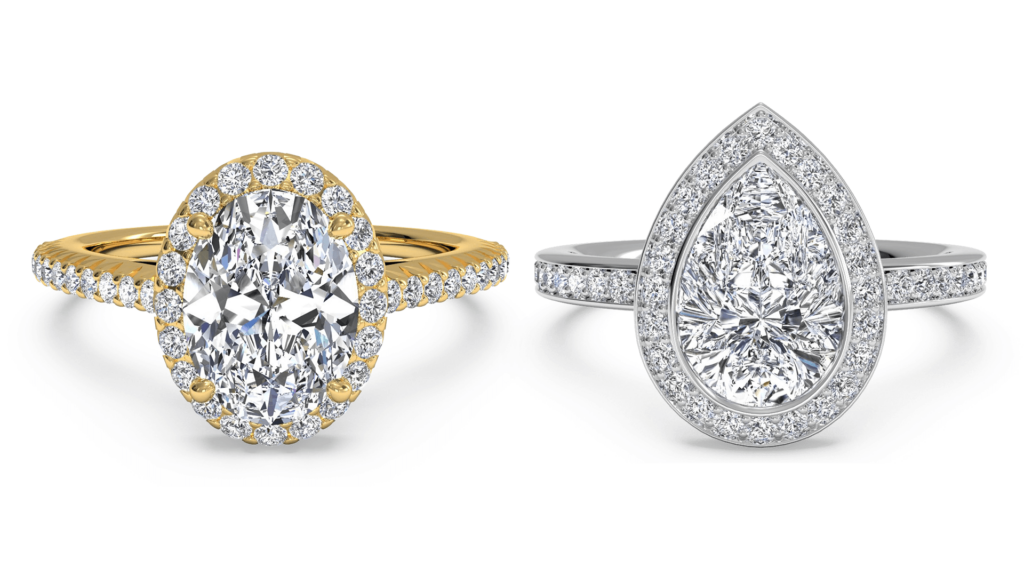FREE INTERNATIONAL DELIVERY
ETHICALLY SOURCED DIAMONDS
60 DAY RETURN POLICY
14th December 2023

If you are searching for the perfect diamond engagement ring for your significant other, one of the first things you will need to consider is whether you should get a yellow gold band or a white gold band, as it will be one of the first things anyone will notice.
Traditionally, gold comes in two colours – classic yellow gold, which has been used in jewellery since ancient times, and white gold, which became popular in the 1920s.
Yellow gold is a precious metal that occurs naturally.
It can be mined from the ground or panned from rivers. In its purest form, gold is too soft to be used for diamond jewellery as it could easily bend, so it needs to be mixed with alloy metals, such as platinum or copper, before being used as a setting for diamonds and other precious stones.
White gold is created by mixing pure yellow gold and white alloy metals such as platinum, silver or palladium, which gives white gold its colour and makes it stronger. It is also plated with rhodium, a precious metal similar to platinum, to give the gold its shiny silvery-white appearance and protect it from scratches.
Karats, abbreviated as the letter K, measure gold’s purity on a scale of up to 24 karats. The highest measurement, 24K, represents pure gold. As pure gold is too soft to be used for jewellery, engagement rings in the UK are most commonly manufactured using 9K, 14K and 18K gold.
• 9-karat gold contains nine parts (37.5%) of pure gold and fifteen parts (62.5%) of other precious alloy metals.
• 14-karat gold consists of fourteen parts (58.3%) of pure gold and ten parts (41.7%) of other metals.
• 18-karat gold is made out of eighteen parts (75%) of pure gold and six parts (25%) of other metals.
Here are the most important considerations when deciding what colour gold engagement ring you should get
If you want the proposal to be a surprise, you probably don’t want to ask your other half what gold colour ring they like better. However, you could try a different approach. For example, if your partner has a birthday coming soon, you could say you are thinking of buying her a pair of earrings, a pendant, or a bracelet and need to know what gold colour she would prefer. If you still don’t want to risk asking, you could check what colour most of her current jewellery is and take it from there.
If there is a piece (or pieces) of jewellery your partner wears regularly, it might be a good idea to ensure the ring’s band colour matches the existing jewellery. For example, if she has a yellow gold necklace she wears all the time, yellow gold will probably be a better choice. If she has a white gold or silver bracelet that she wouldn’t leave the house without, it’s better to go for white gold.
The wearer’s skin tone is another consideration when buying gold jewellery. Yellow gold tends to look better on people with warm skin tones (yellow undertones). In comparison, white gold is typically more suitable for people with cool skin tones (pink undertone).
If you are still trying to decide and need more advice, give us a call during office hours or send us a message via our WhatsApp service, and our experienced, London-based advisors will be happy to help.